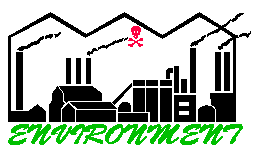Copyright © 1996, 1997, 2001 by Galen
Daryl Knight and VitaleTherapeutics, Inc.
 ENVIRONMENTAL
FACTORS
ENVIRONMENTAL
FACTORS
IN DISEASE
Since the vitaletheine modulators are phenomenally potent immune stimulants
(as little as attograms/ml or femtograms/kg have biological activity),
they probably occur naturally at only minute concentrations. This means
that they are particularly vulnerable to nutritional
deficiencies, to metabolic imbalance, and to inactivation by environmental
toxins.
Because of their potential impact upon our immune systems, chemical
compounds that resemble certain nutritional
substances may be among the most dangerous of the environmental pollutants;
these analogues should be avoided until their safety has been firmly established.
(Diesel fuel doesn't work well in gasoline cars, even though the two substances
resemble each other somewhat, both physically and chemically.) Another
way to think of chemical analogues of important natural compounds is as
"keys" that will bind in the "lock" (or biological receptor), but not work
in the "lock". It is of no small consequence that a presence in the lock
(analogue) prevents the right "key" (or natural substance) from functioning.
An example of this is the use of omega-methylpantothenic
acid to block the utilization of pantothenic acid in man. This analogue,
or a pantothenic acid deficiency (a lost key), prevents the usual antibody
response to tetanus antigen, i.e., vaccination. Some analogues even can
go one step further and bind chemically with the receptor, just as the
wrong key can break off in the lock and prevent the "right key" from working
until the "lock" is rebuilt or replaced.
Non-Nutritive Environmental Factors
"Natural" Does Not Always Mean "The Right Stuff"
The previous discussion about the importance of nutrition and hormones
and of the problems associated with non-nutritive substances in the control
of disease should not be construed as an unqualified endorsement of "natural"
therapies. In addition to therapeutic substances, plants used as herbs
and tonics often contain very toxic substances.
For example, extracts of ginseng (considered by many to be a panacea) can
be fatal if taken intravenously where its saponins or sapogenins (detergents)
lyse blood cells. Aflatoxins, potent carcinogens produced by "natural"
organisms growing on poorly stored grains and peanuts, are thought to be
a major cause of liver cancer. If one also considers that the teleocidins
and olivoretins (from the Streptomyces or Streptoverticillium
Genus), lysergic acid (LSD from ergot), nicotine (from tobacco), phorbol
esters (from Croton tiglium) and strychnine (from seeds of the
Strychnos
or Loganiaceae Genus) are all toxic "natural" substances one begins
to understand just how dangerous our "natural" environment can be. Many
of these and other natural toxins and mycotoxins are of particular concern
for their negative effects upon immune function.
Instead of placing blind faith in either camp, it may be wiser to be evenly
vigilant in dealing with herbal, chemical, or drug analogues of important
biological or nutritional substances; something close to, but not quite
the "right stuff", can produce life-threatening side effects, complications,
and health problems regardless of its source.
Coming Soon----When "Cl"eanliness Creates an unGodly Mess for Your Body.
Coming Soon----Unifying Theory of Chemical Carcinogenesis and Chemotherapy.
"Sounds Presumptuous, Doesn't It?"
GO TO:
 ENVIRONMENTAL
FACTORS
ENVIRONMENTAL
FACTORS ENVIRONMENTAL
FACTORS
ENVIRONMENTAL
FACTORS